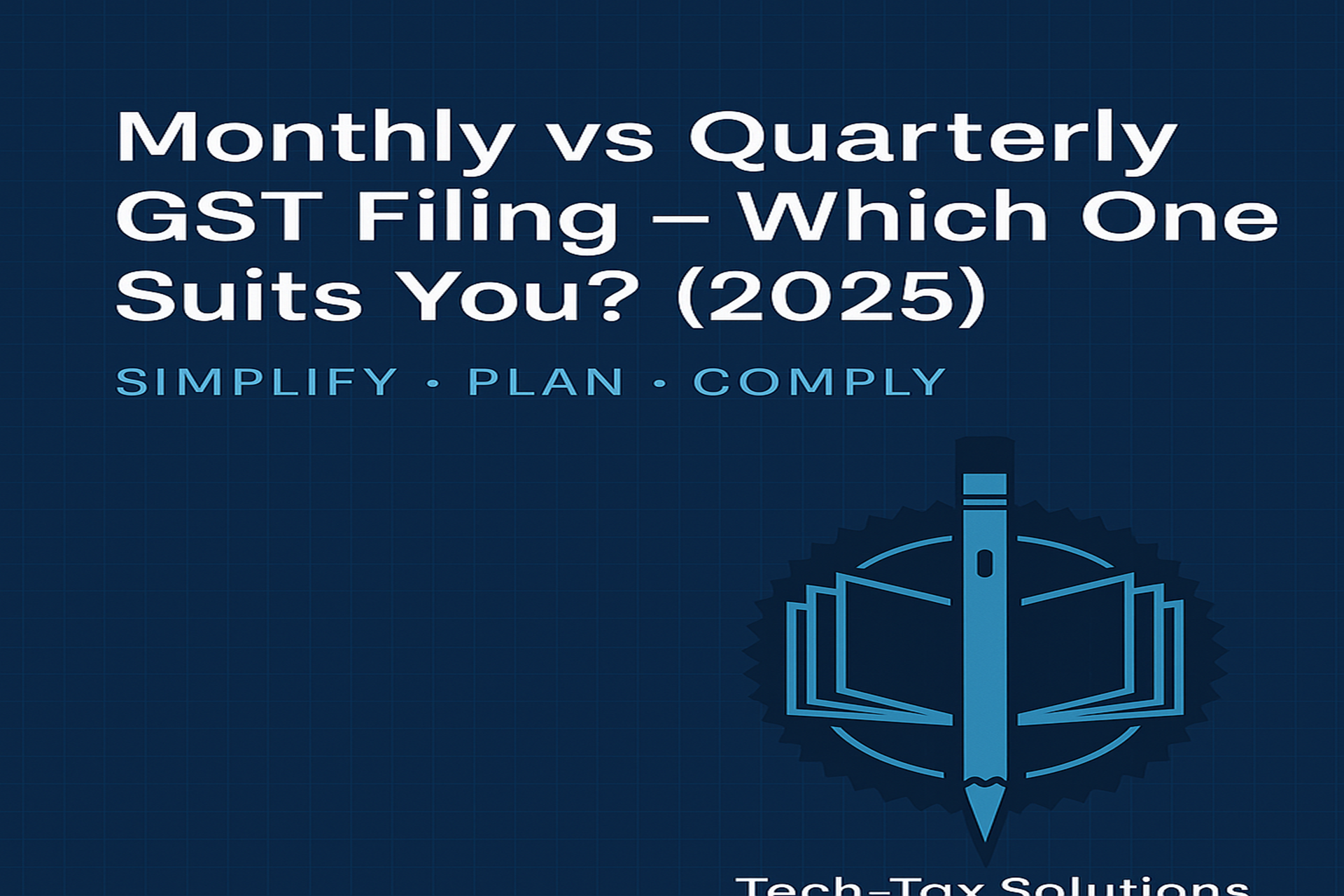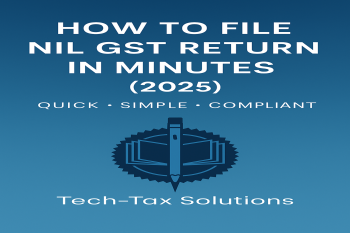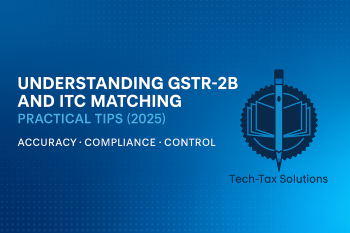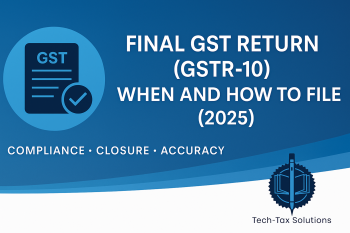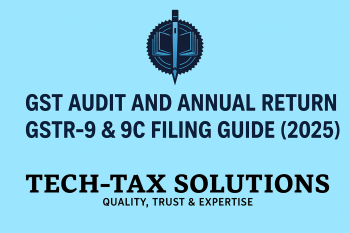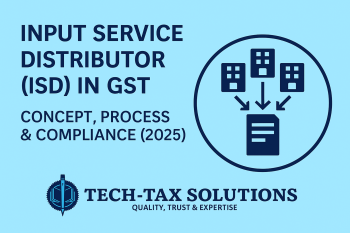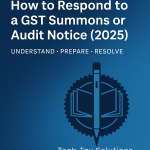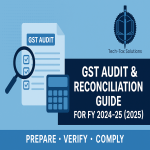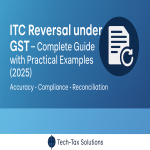🔹 Introduction
Under the Goods and Services Tax (GST) regime, registered taxpayers are required to file periodic returns to report sales, purchases, and tax payments. The Government of India offers two main filing options — Monthly and Quarterly — to simplify compliance and align with business size and turnover.
Choosing the right filing frequency is crucial. It impacts cash flow, compliance workload, and administrative efficiency.
This article explains the difference between monthly and quarterly GST filing, eligibility criteria, and how to decide which option suits your business best under the latest provisions applicable for FY 2025–26.
🔹 Legal Framework
The provisions governing GST return filing frequency are derived from:
-
Section 39 of the CGST Act, 2017 – Furnishing of returns.
-
Rule 61 of the CGST Rules, 2017 – Prescribes GSTR-3B filing frequency.
-
Rule 61A & 87B (QRMP Scheme) – Quarterly Return with Monthly Payment Scheme.
-
CBIC Notifications No. 84/2020 – Central Tax (dated 10 November 2020) – Introduced QRMP Scheme effective from 1 January 2021.
📘 Objective:
To simplify GST compliance for small taxpayers while ensuring timely tax collection for the government.
🔹 Option 1: Monthly GST Filing
✅ Who Can Opt for It
Businesses with aggregate annual turnover above ₹5 crore must file monthly returns.
🧾 Returns to File
-
GSTR-1: Monthly return for outward supplies (by 11th of the next month).
-
GSTR-3B: Summary return for payment of taxes (by 20th of the next month).
💰 Advantages
-
Early ITC reflection for buyers (boosts credibility).
-
Regular cash flow management.
-
Fewer chances of ITC mismatch.
⚠️ Disadvantages
-
Higher compliance frequency (24 filings a year).
-
Requires strong accounting support.
📊 Ideal for:
Medium and large businesses with consistent sales and vendor transactions.
🔹 Option 2: Quarterly GST Filing (QRMP Scheme)
✅ Who Can Opt for It
Taxpayers with aggregate turnover up to ₹5 crore in the preceding financial year can file quarterly returns under the QRMP Scheme.
🧾 Returns to File
-
GSTR-1: Quarterly (by 13th of the month following the quarter).
-
GSTR-3B: Quarterly (by 22nd or 24th depending on state).
-
Tax Payment: Monthly via PMT-06 Challan using Fixed Sum or Self-Assessment method.
💰 Advantages
-
Reduced filing burden (8 returns annually).
-
Easier cash management for small taxpayers.
-
Simplified compliance using Invoice Furnishing Facility (IFF) for outward supplies.
⚠️ Disadvantages
-
ITC reflection delay for customers if invoices not uploaded via IFF.
-
Risk of bunching workload at quarter-end.
📊 Ideal for:
Small and micro businesses with limited transactions and stable revenue.
🔹 Comparison: Monthly vs Quarterly Filing
|
🔹 Example Scenarios
Example 1:
M/s Star Electronics has a turnover of ₹8 crore.
➡️ Must file GSTR-1 & GSTR-3B monthly.
📌 Reason: Turnover exceeds ₹5 crore; QRMP not allowed.
Example 2:
M/s Green Supplies has a turnover of ₹2.5 crore.
➡️ Can opt for QRMP and file quarterly, paying tax monthly through PMT-06.
📌 Reason: Turnover within ₹5 crore threshold.
Example 3:
M/s Small Crafts, turnover ₹1 crore but many B2B clients.
➡️ Better to use Monthly filing so clients get faster ITC reflection.
🔹 How to Opt for Quarterly (QRMP) Scheme
Step 1:
Login to www.gst.gov.in
→ Navigate to Services → Returns → Opt-in for Quarterly Return.
Step 2:
Select the applicable quarter and confirm your choice.
Step 3:
Option auto-renews for subsequent financial years unless changed manually.
💡 Note:
You can change the filing frequency only once at the beginning of a financial year.
🔹 Common Mistakes
-
❌ Delaying payment under QRMP — interest applies from due date.
-
❌ Skipping IFF upload → buyers can’t claim ITC timely.
-
❌ Assuming QRMP means no monthly activity — monthly tax payment is mandatory.
-
❌ Ignoring turnover changes — must switch to monthly if exceeding ₹5 crore.
🔹 Best Practices
✅ Evaluate turnover annually to choose the right filing frequency.
✅ Use IFF under QRMP to maintain buyer satisfaction.
✅ Automate filing reminders for due dates.
✅ Reconcile GSTR-2B with purchases monthly, even under QRMP.
✅ Seek professional advice before switching filing mode.
🔹 FAQs
Q1. Can I switch from monthly to quarterly filing anytime?
➡️ No. You can change your filing frequency only at the beginning of each financial year.
Q2. What happens if turnover exceeds ₹5 crore mid-year?
➡️ You must switch to monthly filing from the next quarter automatically.
Q3. Do QRMP taxpayers have to pay monthly tax?
➡️ Yes. Payment is mandatory monthly through Form PMT-06.
Q4. Is the Invoice Furnishing Facility (IFF) compulsory?
➡️ Optional but recommended for B2B sellers to ensure buyers can claim ITC on time.
Q5. Can Tech-Tax Solutions help with QRMP setup?
➡️ Yes. We assist in GST filing setup, QRMP registration, and automated reminders to simplify compliance.
🔹 Conclusion
Both Monthly and Quarterly GST filing options serve different business needs.
For small taxpayers, the QRMP Scheme reduces compliance workload, while larger or B2B-driven entities benefit from monthly filing due to quicker ITC visibility and smoother transactions.
📌 To determine the best filing frequency for your business and set up automated GST compliance, consult Tech-Tax Solutions – Quality, Trust & Expertise.
